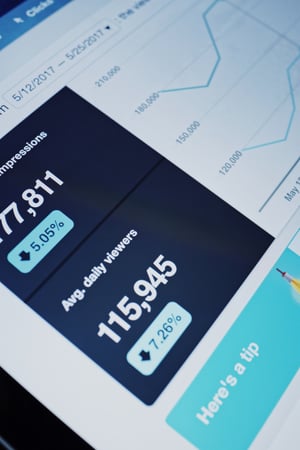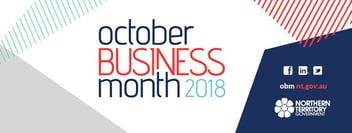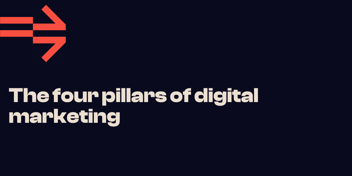3 ways to improve ROI on ad spend in 30 minutes or less
Ryan Jones
29 October 2018

A recent study reported by Signal.co found that Australia has the highest digital ad spend per user in the world. If trends of the past two years continue, over half of all ad dollars spent in the country will have been dedicated to online and mobile platforms.
Of course, it’s worth mentioning that ad spend isn’t inherently bad. In fact, if every dollar spent is generating a healthy conversion rate and return on investment, it’s an undeniably positive expenditure. Unfortunately, that has not been the case. The same study linked above also pointed out that Australian marketers are struggling to engage their customers through ads, with click-through rates on banner ads appearing particularly abysmal.
Digital marketing provides us with an excellent opportunity to calculate ROI and net profit on all our campaigns. This means you can keep increasing your spend on advertising on Facebook because you know you’re making a return on that investment.
Now, we’re not going to exaggerate and tell you that running a wildly successful digital marketing campaign is easy, because it most certainly isn’t. However, it’s also true that many advertisers make simple, easy-to-correct mistakes that harm their marketing ROI tremendously. That’s why we’ve put together this list of quick fixes that you can use to boost return on ad spend in 30 minutes or less.
1. Hone in on your target customer persona
It should be obvious enough that a ‘spray and pray’ advertising campaign is a waste of money. If you try to target the entire world, you’re bound to waste a lot of ad spend on users who would never even consider purchasing what you have to sell. Almost everyone who has ever spent a dollar on advertising has taken some amount of time to think about who they should be targeting with their ads.
 Here's the part that you might be overlooking, however: every single day that you run an ad campaign, you are presented with an opportunity to learn more about who you should be targeting in the long term.
Here's the part that you might be overlooking, however: every single day that you run an ad campaign, you are presented with an opportunity to learn more about who you should be targeting in the long term.
Certain users never click your ads. Others click but then immediately bounce. Others visit but seem to need an extra push to make a purchase. And so on.
The odds are good that you are not using every piece of available information to your advantage - and the more generalised your target audience is, the less revenue your ad spend will ultimately generate.
You don’t need to be a statistician or an advertising genius to make improvements. The odds are, if you just looked at your Google Analytics data, or even did a thought exercise about your target customers, you could make a few highly effective changes to your ad campaigns in a matter of minutes - changes that would decrease useless spending and improve your ROI significantly.
Understanding these users helps you hone your keywords and campaigns too. This has benefits for your ads relevance scores, decreasing how much an advertiser pays for each click or impression.
2. Set constraints on your retargeting campaigns
Another mistake businesses often make with their ad spend is inundating people who visited your website with ads long after they initially clicked on a page of your website.
For these businesses, the intent is understandable; they hope that if website visitors see the ad often enough, interest will be piqued and they will have no choice but to take a closer look at the company’s product or service. Retargeting ads can be incredibly effective. However, this strategy can also backfire if it is not managed correctly.
![]()
The sad truth is that, within most audiences, if your visitor has not decided to come back within a few days after visiting your site, they are unlikely ever to return. If you continue spending money retargeting those people, you may simply be throwing your money away while annoying people with overexposure. This varies from industry to industry, and whether you’re in a B2B or B2C market, but typically you’re best served saving the ad cost.
As a general rule, retargeting works best if you target visitors up to a week after they last looked at your site. After that, it is best just to let go and keep pursuing those who might actually be interested. Changing the settings on your retargeting campaign shouldn’t take long, but it can help stretch your ad dollars further while yielding better results.
Make sure you incorporate these changes into your custom audiences too, so you’re not inflating your Facebook Advertising costs.
3. Stop ad spend on your least profitable advertising platform
This might seem like a bold move. In fact, it is a bold move. But if you are struggling with ROI on ad spend, then this might be just the remedy. Precision and effective spending will get you a long way, and if you are trying to run campaigns across multiple platforms, it can be challenging to stay focused on exactly the right audience for each platform.

At the beginning of this post, we mentioned that Australia has the highest online ad spend per user in the world. Another category we are leading in? The marketing cost of Facebook ads. Adnews reports that the cost per thousand impressions in Australia is about $6.40, compared to a global average of $1.80.
If, for example, you’re finding that Google Ads is far more profitable for your company than Facebook ads, why not halt Facebook spending and reinvest that marketing budget in Google? Or, if you find that, in spite of their high cost, Facebook impressions yield more profitable results that LinkedIn advertising, perhaps it’s time to spend more on Facebook.
This last tip obviously isn’t for everyone. If your ad campaign is truly firing on all cylinders, then you may as well keep up the good work! But if you feel that drastic action needs to be taken, then examining your profitability platform-by-platform may be the place to start.
Bonus tip: Updating ad types
I know, we said 3 ways, but in updating this blog, I found a fourth I really wanted to add.
In some online advertising platforms, switching to newer ad types can make a big difference in your ROI and ad costs. Google Ads, in particular, is a good example here. When Google releases a new ad format, if you make good use of the latest ad types, you can decrease your ad costs and improve your quality scores.
Your results may vary, but we always recommend experimenting with new advertising campaigns and ad types.
Need help with tracking your conversions? Can’t calculate return on investment for your ads? Book a free Exploratory Call to discuss your needs and how our team at Refuel Creative can help.


